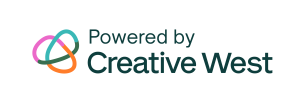You have likely learned a lot about how to use the Media Library and Media Library Selection page to request media from your applicants. Using those tools requires a two-step process for both you and your applicants. The benefits of using those tools are:
- Applicants can store and manage high quality media files in their library including images, video, audio, and document files.
- These single files can be attached multiple times to multiple grant programs, year after year.
- You can request that the applicant attach the desired files in a single space (on the Media Library Selection page).
- You can generate a report of all media and any included data that an applicant provided on the upload form(s).
Though there are many benefits to using those Library tools, you may want to request media from applicants in a way that allows them to:
- upload and attach Image and Document files directly from their device (no uploading to a library then attaching to a Library Selection page).
- link you to existing audio, video, and/or visual samples that already exist on the web (at sites like Youtube, Vimeo, Soundcloud, or their own websites and social media pages).
You can create this media request page or section instead of, or as well as, using a Media Library Selection page. Just remember that using the Media Library tools requires more setup prior to inviting applicants to the application, while building these fields on a Custom Narrative page allows your applicants to jump right in and provide their media.
To create this media request page or section, you will add a combination of File Upload fields and/or Text fields to a Custom Narrative page. File Upload fields can and should be used for images and documents while Text Fields should be used to request links to video and audio clips that are already hosted elsewhere on the internet. File Upload fields accept the following: PDF, DOCX, XLSX, JPG, and PNG. Image files have a maximum limit of 1000 x 1000 pixels and document files have a maximum of 10 MB. If an applicant needs to compress a file, we recommend a free site like freeconvert.com or smallpdf.com.
You can add these fields to a Custom Narrative where you’re asking for other application information, or you can create a dedicated Custom Narrative page just for the purposes of requesting media. See these examples:
Whether you choose either options above, remember that you customize the language around these question types, so you can add additional Info Only questions to give extra directive and you can add additional text fields to ask for more information pertaining to the media, such as Artist Name, Year Completed, Work Size/Price, Track #, etc. Use this Custom Narrative tutorial to learn about adding these fields and create a page or media section that reflects exactly the needs of your grant program.
Follow these steps to build a Dedicated Custom Narrative Media Request page like our example.
- Navigate to Front End Manager > Cycle Pages.
- Select your desired Program and Cycle.
- Add a new Custom Narrative Page, give it an appropriate title, and choose the sequence number to place the page in the correct spot (otherwise it will become the final page of the form by default).
- Remember that you may definitely want to create this type of page in an interim or final report if you’ve used the only allotted Media Library Selection page in your application form.
- Click EDIT to navigate to the editor for this new page.
- Add your first bit of directive language in the Info/Instruction text or say something like “Please provide the requested support material below” and then list your requests.
- Add one or multiple File Upload fields.
- Remember that each field displays a single button to your applicant and they can only upload a single file per button, so either offer multiple buttons, or direct them to consolidate all of their image/document files into a single PDF that can be uploaded with a single button.
- Add an Info Only field to direct your applicants how to use the text field(s) to provide you with links to existing samples.
- Be sure to include language about including the https:// lead in for any link. Without this prefix, their entry will be plain text, and you and your applicants won’t be able to simply click on the link, but would instead need to copy and paste it into a new browser window.
- If applicants only provide an http:// prefix, without the ‘s’, the site will not open because it is not secure, so you may opt to include additional directive language that they create a bit.ly or other temporary URL so that you can easily navigate to their site from GO Smart. Learn more about this here.
- Add a Text Area (small) field if you will be asking for individual sites as in the first section of the example.
- Add a single Text Area (large) field if you want them to provide multiple links and some narrative, as in the second section of the example.
Follow the same steps above to add media request questions to an existing page, but rather than adding a page in step 3, click EDIT for the existing page. Use the sequence field when adding new questions to place them in the appropriate spot, otherwise they will be added to the end of the page by default.


